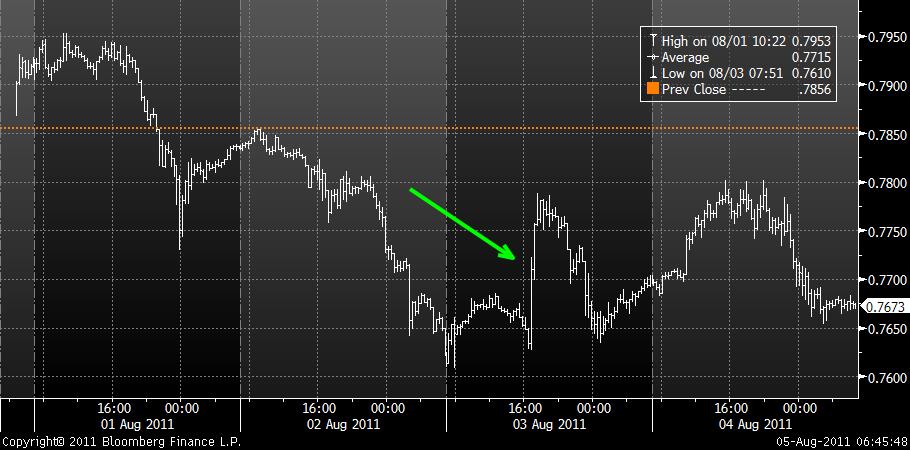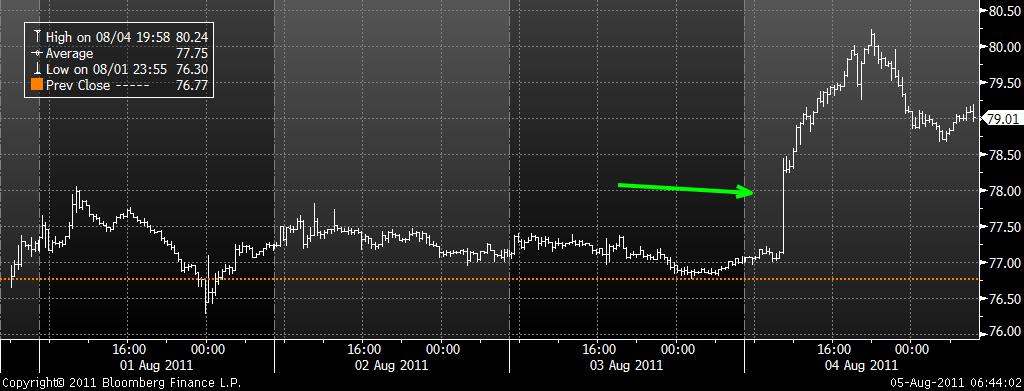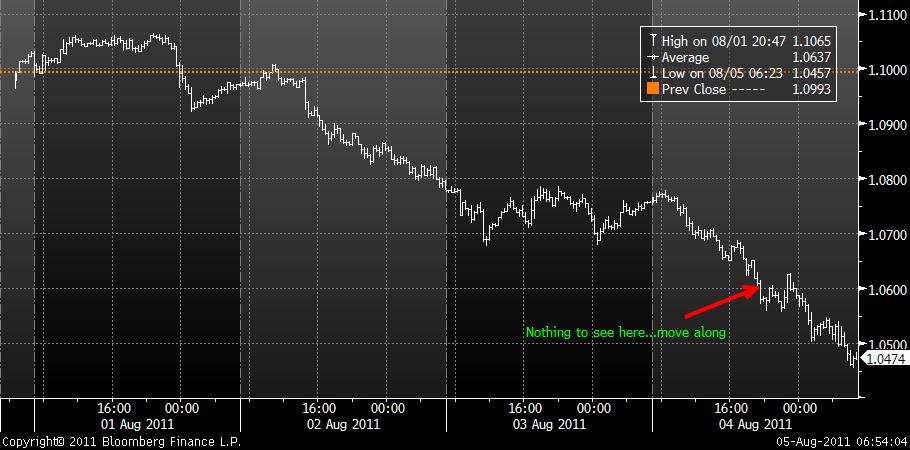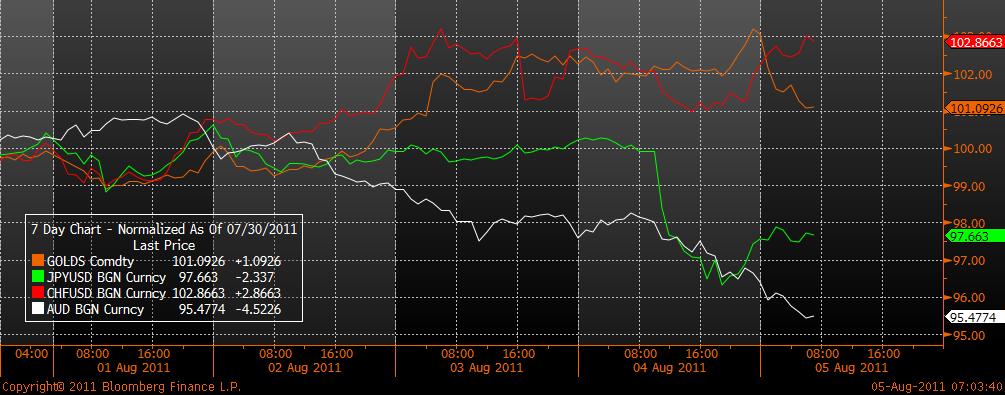The AUD has been smashed in the past 36 hours as markets have gone off and fear and uncertainty has risen. From trading 1.1068 earlier in the week it sits at 1.0468 as I write. In many ways it is a resumption of usual transmission for the currency that I believe is the world’s favourite punt. This piece is aimed at politely debunking the idea that has been rising lately that the AUD is a safe haven.
Now there is no doubt that we have talked a lot about the idea that the Aussie has been rerated over the past few months. But we have become increaseingly uncomfortable over the past couple of week’s with the talk of Aussie and Kiwi as safe havens. There have been quite a few articles in the press about this topic and the head of FX Strategy at UBS even published and article in the FT earlier this week saying:
The conventional wisdom that the haven Swiss franc outperforms during times of risk aversion, while the Australian and Canadian dollars appreciate when risk-seeking investors shift into commodities, has become undone this year as all three currencies have surged against the US dollar and the euro.
To me it just doesn’t stack up and I see little evidence in market price action as I wrote in the weekly wrap last Saturday.

Over the past couple of days the “real” safe haven currencies of Switzerland and Japan have seen their central banks intervene to push them lower. The Swiss National Bank entered the market a couple of days ago saying the Swissy was massively overvalued and then flooded the market with liquidity to drive it lower. The spike higher (remember that the Swissy is quoted as USD/CHF – so when the CHF weakens the USD/CHF goes up) indicated by the arrow is where they came in. You can see that things haven’t gone that well for them as Swissy strengthened again.

Likewise the Bank of Japan came in yesterday in our timezone and threw a pile of cash at the USD/JPY rate driving it higher, as indicated once again by the green arrow. The Japanese have had more success, although not perfect success, in moving Yen lower.
Both of these instances got me thinking as to whether the RBA might want to take the opportunity to intervene if they thought the Aussie was getting out of line on the back of these supposed “safe haven” flows.

As you can see in the chart above, there is no evidence of the RBA hitting the market. But there is evidence of a simple unrelenting slide in the Aussie.

The chart above is of the hourly movements of the Aussie, Gold, Swissy and Yen this week indexed to 100. You can see that the Yen, which has been the beneficiary of intervention and the Aussie are off substantially while Gold and Swiss Frank are not.
Which brings me back to the point of this blog. There has been too much extrapolation of a set of market parameters that supported the Aussie into the status of a safe haven. Certainly I believe that it has been rerated but given the size of Aussie trade relative to its place in the indexes of fund managers and, crucially, given it is still a growth currency, when markets and the outlook for global growth are under pressure then so is the Aussie.